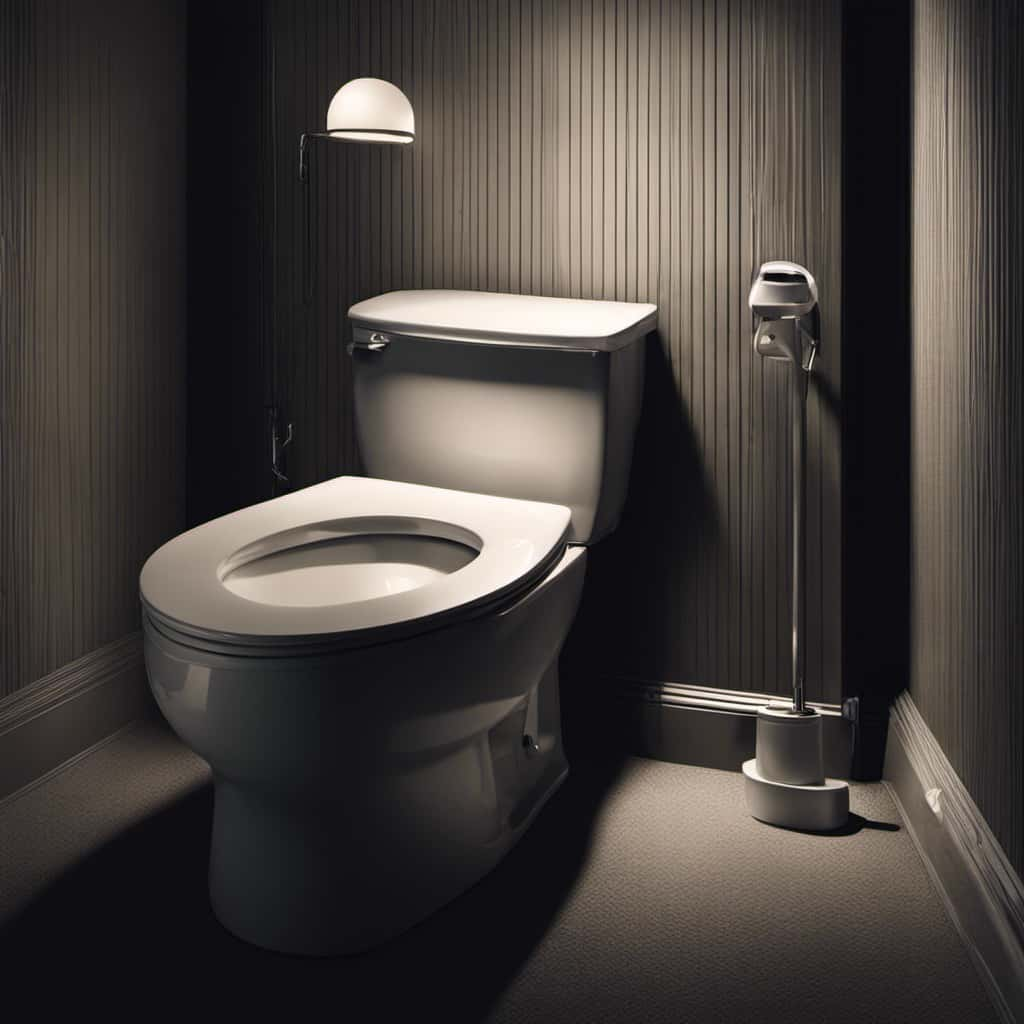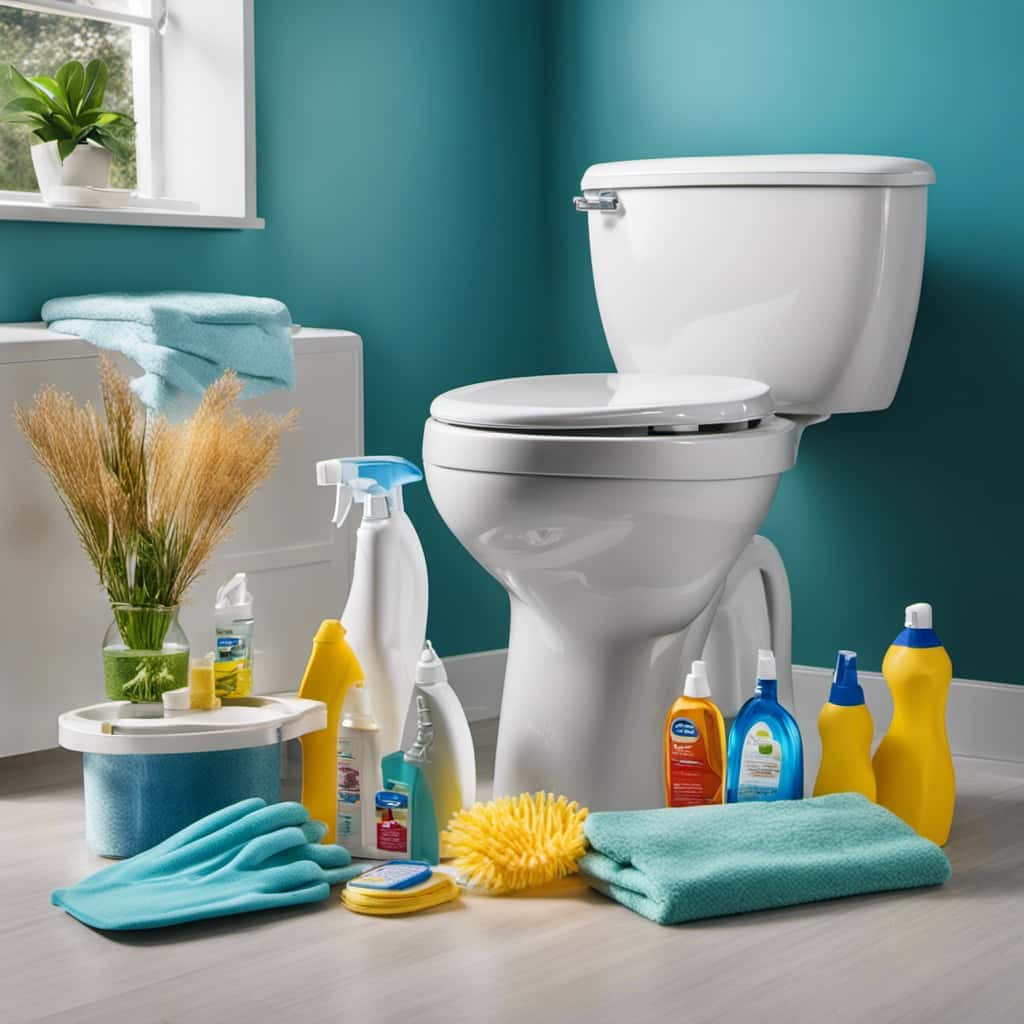Have you ever wondered why South American countries don’t flush toilet paper?
We’ll uncover the cultural and historical factors, plumbing infrastructure challenges, environmental impact, public health and sanitation concerns, as well as alternative solutions and practices.
Join us on this enlightening journey as we explore the reasons behind this unique practice.
Get ready to dive deep into the fascinating world of South American toilet etiquette and gain a comprehensive understanding of this intriguing phenomenon.

Key Takeaways
- Prevalent use of septic systems and limited access to centralized sewage systems contribute to the cultural practice of not flushing toilet paper in South America.
- Outdated plumbing systems and the inability to handle the strain of toilet paper are major challenges in the region.
- Not flushing toilet paper helps to conserve water in regions with water scarcity and reduces strain on water systems.
- Proper waste management practices, such as using dedicated waste bins for toilet paper disposal, can alleviate strain on sewer systems and improve overall hygiene.
Cultural and Historical Factors
One of the main cultural and historical factors that contribute to the practice of not flushing toilet paper in South American countries is the prevalent use of septic systems. This practice has economic implications and is deeply rooted in social norms and practices.
In many South American countries, septic systems are the primary method of wastewater treatment due to limited access to centralized sewage systems. Flushing toilet paper can lead to clogged pipes and septic tank issues, which can be costly to repair. Therefore, it has become a common practice to dispose of toilet paper in a separate bin instead.
Additionally, cultural and historical factors have shaped the perception of toilet paper disposal, with some countries perceiving it as unhygienic or environmentally unfriendly. These factors have contributed to the widespread acceptance of not flushing toilet paper in South America.
Transitioning to the subsequent section about plumbing infrastructure challenges, let’s explore the various issues faced in maintaining functional sewage systems.

Plumbing Infrastructure Challenges
To understand the reasons behind the practice of not flushing toilet paper in South American countries, it’s important to address the plumbing infrastructure challenges that contribute to this cultural norm.
South America faces significant water scarcity issues, and the existing plumbing systems are often outdated and unable to handle the additional strain of toilet paper. This leads to clogged pipes and sewer backups, causing further damage to the already fragile infrastructure.
Moreover, the economic implications of upgrading the plumbing systems to accommodate flushing toilet paper can be substantial for these countries, which often have limited resources. Therefore, the practice of not flushing toilet paper has become a practical solution to avoid unnecessary strain on the plumbing infrastructure and to conserve water in regions where it’s a precious resource.
Environmental Impact
Considering the previous subtopic on plumbing infrastructure challenges, it’s crucial to delve into the environmental impact of not flushing toilet paper in South American countries.

One major concern is water scarcity. Flushing toilet paper consumes a significant amount of water, especially in regions where water is already scarce. By not flushing toilet paper, South American countries can conserve water resources and alleviate the strain on their water systems.
Another aspect to consider is waste management. Flushing toilet paper can lead to clogged pipes and overloaded sewage systems, resulting in costly repairs and maintenance. By adopting the practice of disposing of toilet paper in waste bins instead of flushing, South American countries can improve waste management processes and reduce the environmental impact of their sanitation systems.
Public Health and Sanitation Concerns
From a public health and sanitation perspective, our decision to not flush toilet paper in South American countries is driven by the need to prevent plumbing issues and maintain hygienic conditions. This practice is influenced by two main factors: water scarcity and lack of education.
- Water scarcity: Many South American countries face water scarcity issues, and flushing toilet paper can contribute to the strain on limited water resources. By not flushing toilet paper, we can conserve water and ensure its availability for essential needs.
- Lack of education: In some regions, there’s a lack of awareness and education regarding proper waste disposal. Flushing toilet paper can lead to clogged pipes and sewage system problems. To avoid these issues, it’s common practice to dispose of toilet paper in dedicated bins.
- Hygiene concerns: Proper waste management is crucial to maintain hygienic conditions. By disposing of toilet paper in bins, we can prevent the spread of bacteria and potential health risks associated with improper waste disposal.
Alternative Solutions and Practices
One alternative solution to flushing toilet paper in South American countries is using dedicated waste bins for disposal. This sustainable option helps to alleviate the strain on sewer systems and prevent clogs. By placing a waste bin next to the toilet, individuals can simply discard used toilet paper into the bin instead of flushing it down the toilet. This practice not only ensures proper sanitation but also promotes better hygiene practices.

Here is a table that compares the advantages and disadvantages of using dedicated waste bins for toilet paper disposal:
| Advantages | Disadvantages |
|---|---|
| Prevents clogs in sewer systems | Requires regular emptying of waste bins |
| Reduces strain on plumbing infrastructure | May result in unpleasant odors |
| Promotes sustainable waste management | Requires habit adjustment |
| Improves overall hygiene practices | Potential for increased spread of germs |
Frequently Asked Questions
How Do South American Countries Handle the Disposal of Used Toilet Paper if They Don’t Flush It?
In South American countries, waste management practices regarding used toilet paper vary due to cultural norms and habits. Instead of flushing it, some countries have designated bins or receptacles for proper disposal.
Are There Any Exceptions to the Practice of Not Flushing Toilet Paper in South American Countries?
There are some exceptions to the practice of not flushing toilet paper in South American countries. These exceptions can vary depending on cultural reasons and specific plumbing systems in certain areas.
What Are the Challenges Faced by South American Countries in Improving Their Plumbing Infrastructure to Accommodate Flushing Toilet Paper?
Improving plumbing infrastructure in South American countries to accommodate flushing toilet paper presents challenges. These challenges include outdated systems, limited access to resources, and the need for extensive renovations to ensure proper waste management.

How Does the Practice of Not Flushing Toilet Paper Impact the Environment in South American Countries?
The practice of not flushing toilet paper in South American countries has a significant impact on sanitation and the environment. Cultural reasons often dictate this practice, but it poses challenges for waste management and can contribute to pollution and health risks.
What Are the Potential Health Risks Associated With Not Flushing Toilet Paper in South American Countries?
Potential health risks associated with not flushing toilet paper in South American countries include the spread of bacteria and parasites, increased risk of diseases like diarrhea and hepatitis, and unsanitary conditions. These practices are influenced by cultural beliefs and inadequate sewage systems.
Conclusion
In conclusion, the practice of not flushing toilet paper in South American countries is a result of a combination of cultural, historical, and infrastructure factors.
While it may seem unusual to some, it’s important to understand the reasons behind this practice.

By considering the environmental impact, public health concerns, and alternative solutions, we can appreciate the unique approaches to sanitation in different parts of the world.










